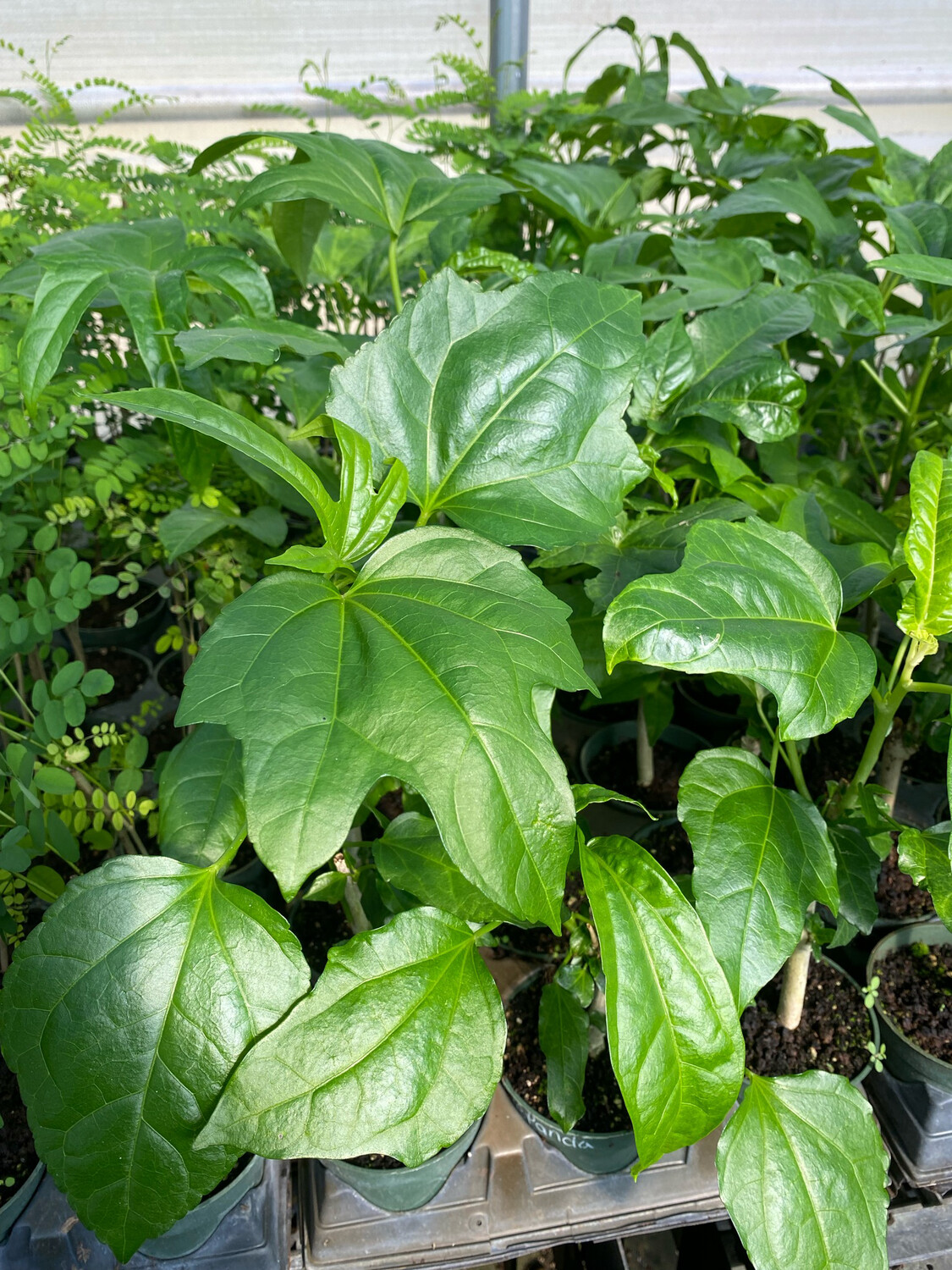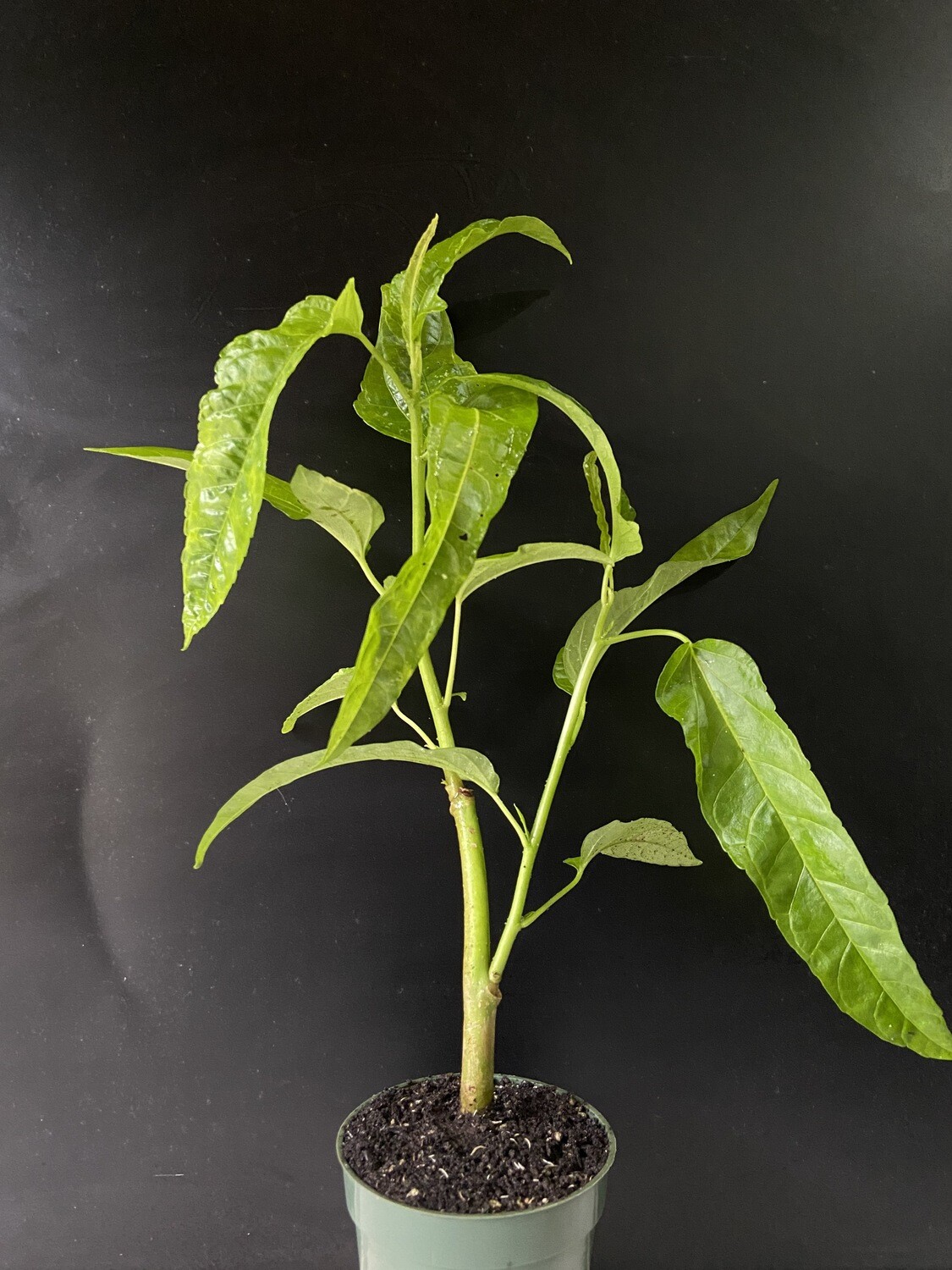IMPORTANT INFORMATION BEFORE PURCHASING LIVE PLANTS:
*Please be advised that our online store selections are NOT available for pickup at our retail location in Spring Hill, Florida.
Inventory for our online store is located at a separate facility and are priced and handled exclusively for packaging & shipping.
Click here to learn more about our Spring Hill, FL retail nursery location, including countless more nursery selections ready for pickup - larger sizes and wider variety of plants not suitable for nationwide delivery.
1. Shipping Stress: Transportation can be stressful for plants, particularly when they spend several days in a confined, dark environment. It’s common for plants to experience leaf drop during this period. Rest assured, most plants typically recover quickly and thrive with minimal aftercare. However, some may need extra attention, love, and care, requiring appropriate watering and exposure to gentle light post-unboxing.
2. Potential Physical Damage: Despite our dedicated efforts to ensure that your plants are securely packaged, they may incur damage during shipping and handling by UPS. Rest assured, our shipping team is committed to packing your selections with utmost care and precision to minimize any potential harm.
-
For significant box damage, please reach out to UPS within 30 days to initiate a claim.
-
For minor damages, such as a broken branch or stem, we advise allowing the plant time to recover and regenerate with proper care and attention.
3. Long-Distance Shipping Considerations: Orders shipped over long distances, particularly to the western US, may take 3 - 5 business days to arrive due to various factors, including agricultural inspections in Arizona, California, and Texas. Such extended transit times can be particularly challenging for tender, young plants, affecting their quality due to prolonged confinement.
-
We take additional measures during packaging to facilitate a swift recovery of the plants upon unboxing.
-
Initial extra care and attention might be required over the first few weeks post-transport.
For further guidance, kindly review our detailed policies on returns and refunds, as well as our comprehensive plant care guide. We appreciate your understanding and patience in nurturing your new plants.
🌿 Important Shipping Information
Please take a moment to review our shipping protocols designed to ensure your plants arrive in optimal condition.
-
Countdown Clock: At the top of our online store, you'll notice a countdown clock. This tool helps communicate our weekly shipping schedule, providing clarity on when you can expect your orders to be dispatched.
-
Shipping Schedule: Our nursery, located in the heart of Central Florida, ships orders once weekly, every Monday. This is a strategic decision to prevent packages from being stationary over the weekends, ensuring that our plants travel as swiftly as possible across the country, even reaching as far as California.
-
Shipping Method: At present, we offer ground shipping rates to meet various needs while maintaining the well-being of our plants during transit.
-
Our Dedicated Team: We are a boutique nursery with a passionate team. Our members wear many hats, contributing to shipping, nursery operations, and engaging in valuable local projects. As we blossom and expand, rest assured that enhancing and streamlining our processes remains a priority to serve you better
Terms and Conditions for Purchasing Live Plants
1. Understanding of Shipping Stress
By purchasing live plants from our store, the customer acknowledges that transportation can be stressful for plants. It is common for plants to undergo leaf drop or experience other temporary issues during shipping. However, it is understood that most plants recover quickly with adequate care and attention post-shipping.
2. Awareness of Potential Physical Damage
Customers acknowledge that despite our best efforts in packaging, there may be occurrences of damage during shipping and handling. For substantial damages to the package, customers agree to contact UPS within 30 days to initiate a claim.
3. Acknowledgement of Long-Distance Shipping Considerations
Customers recognize that shipments, especially those directed to the western US, may be subjected to longer shipping durations of 3-5 business days. Customers agree to provide necessary care to the plants, recognizing that the quality of the plants may be affected due to prolonged shipping times.
4. Agreement with Shipping Information and Schedule
Customers, by making a purchase, have reviewed and agreed upon our shipping protocols and schedules. They acknowledge the presence of a countdown clock on the website and our once-weekly shipping policy every Monday, recognizing the rationale behind avoiding weekend layovers for the plants.
5.Extreme Weather Conditions
Customers acknowledge that our store is not responsible for damage or loss of live plants due to extreme weather conditions during transit and delivery. This includes exposure to cold or freezing temperatures during the winter months and extreme heat during the summer. We provide tracking information when orders are processed every Monday to ensure customers are aware of the delivery schedule. It is the customer's responsibility to prevent packages from being left outside in conditions that may cause damage. Our store does not accept responsibility for any adverse effects caused by weather conditions beyond our control.
6. No Refund Policy
Customers agree that refunds are only processed under exceptional circumstances. Our store will not be held responsible for poor plant choices relative to location suitability, extreme conditions during and/or post-shipment, and improper post-purchase plant care.
7. Responsibility of Care
Upon purchase, customers agree to assume full responsibility for the ongoing care of the plants. This includes, but is not limited to, appropriate watering, exposure to suitable light, and adherence to specific care instructions pertinent to each plant type.
8. Consent
By proceeding with this purchase, customers consent to all the terms and conditions stated above, confirming understanding and agreement to all stipulations mentioned.
These terms and conditions aim to ensure clarity, mutual understanding, and agreement between the seller and the customer to facilitate a smooth transaction and foster a positive customer experience.



